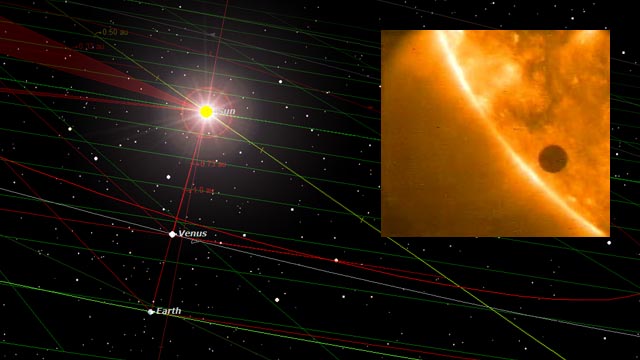
Over the past few months, we've been showing people the brilliant white flare in our evening skies that is the planet Venus, Earth's closest sibling in both size and distance. On Tuesday, June 5th, that same bright planet will accomplish a rare feat, appearing for a few hours not as a bright spot on the nighttime sky, but as a dark spot in the daytime, silhouetted against the brilliant disk of the Sun.
The event is called the "transit of Venus" and not only is it a rare and beautiful wonder and been a pivotal historical event of great scientific significance, but Tuesday's is the last one any of us will ever see--except for, perhaps, some toddlers who are destined to live to ripe old ages.
So don't miss the chance to experience history on Tuesday, June 5, 3:04 PM to 9:46 PM PDT. Did I mention it's a rare event of historical scientific significance? And that it's your last chance to see it! Get it? If you own a toddler, make sure they see it.
You'll be glad you made the effort, as you'll then be members of a very exclusive club, one without membership dues. Since the invention of the telescope in 1608 there have been only seven transits of Venus, and Tuesday's will make eight. The transit of 1631 went unobserved and the 1639 event, the first ever observed, may have been seen by only two people. Talk about an exclusive club; more people have walked on the Moon.
For the 18th and 19th century transits of Venus, expeditions were sent out across the globe to observe Venus' path across the Sun -- including one led by Captain James Cook, in 1769. The observations were compared and used to triangulate the actual distance from the Earth to the Sun and by extension of scale to all the other planets in the solar system.
